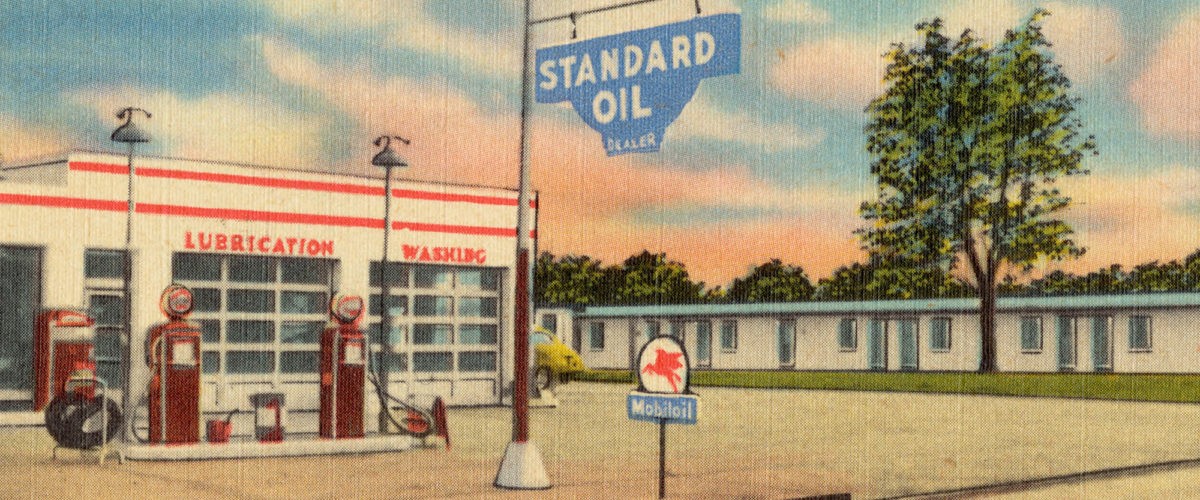From 1957 until he retired, my Pop owned and operated a service station in Meridian, Miss. That occupation, life work and calling were scripted for him by the economic reality that he and most of his seven brothers left school and the family truck-farming business in the eighth grade and began to make a life and an income at this tender age.
When the oldest male sibling went into the service station business, all but one of the other brothers followed suit. The “Newell Boys” and their honesty and good customer service orientation were the sitz im leben in this small city of 50,000 inhabitants for the years in which I was coming of age.

Bob Newell
I’ll never forget that time when the local agents of the Standard Oil Company of Kentucky hit upon a simple marketing scheme for their independent dealers. They proposed to have them paint all their service trucks a bright red color, so that the Standard Oil logo color would point potential customers in the “right direction.”
At that time, most of the Standard Oil dealers already owned 1950s era three- or five-window Chevy or GMC trucks, with a few Ford 100s in the mix. So, it seemed like a grand idea to paint them all red. As a further inducement to their dealers, Standard Oil of Kentucky provided the body paint for free. All Pop and the others had to do was to get Simmons Brothers, the local auto repair shop, to paint them.
Oh, wow, did that old black truck look great, with its brilliant red paint job! As the owner’s 13-year-old, short-of-stature son, I was proud to be seen peeping over the steering wheel, making service calls in that beauty.
But too soon, things changed. In the hot Mississippi summers, that once-brilliant paint job didn’t last. Before we knew it, that shiny service vehicle, likely corrupted by cheap paint and too few coats of it, began to fade to pink. With all due respect to the color pink — which, in its own way and under proper circumstances can be beautiful — in the macho, rough-and-tumble, greasy-fingered service station culture of the day, faded pink did not communicate the masculine, strong, dominant vibe that had been expected.
“Before we knew it, that shiny service vehicle, likely corrupted by cheap paint and too few coats of it, began to fade to pink.”
Later in life, I would recall this story and see in it a prime example of what my sociological training had taught me to recognize as illustrating the difference between manifest and latent functions. A manifest function is a social result that is sought and intended to happen as the outcome of some social behavior. On the other hand, a latent function occurs when some unexpected and often contradictory consequence happens. While the marketers intended to send a strong, bright and compelling message, the actual result, over time, was quite different.
Having lived a few decades now, I have come to recognize that a ubiquitous and essential part of aging is fading. Bright plastic kids’ toys fade after a few hot days. Clothing will fade when worn and washed a few times. Many things fade, and the result is often not at all what it once was or what the users originally intended.
Beyond the vehicular, toy or clothing worlds, today I’m thinking about the personal world. Is this the way it is and must always be? When the once-brilliant, exciting adventure of living fades into the dull monotony of everyday survival, amidst the physical, emotional, intellectual, social and economic assaults of aging, is this as inevitable as the fading of my Pop’s once-bright red truck?
Must we all “fade to pink,” as we age? I hope not and I don’t think so.
Finding new ways to “keep hope alive,” to remain as “shiny” as possible (not just on the outside, but in our souls), and to continue to discover and display our own inner glow is, indeed, one of the geriatric challenges that all of us, if we’re fortunate enough to live beyond middle age, must discover.
Dylan Thomas said it well. Indeed, we should not “go gentle into that good night.” We should “burn and rage at close of day.”
“In my active adult-55-or-better neighborhood, I see two kinds of people.”
In honest candor, we must guard our “colors” and learn to sing with authoritative and authentic meaning the words of Lew Dewitt, immortalized by the Statler Brothers. I don’t smoke and don’t recommend that you do; and Captain Kangaroo may no longer be available to you, but I encourage you to say it out loud: “Counting flowers on the wall, that don’t bother me at all. Playing solitaire ‘til dawn with a deck of fifty-one. Smoking cigarettes and watching Captain Kangaroo, now don’t tell me I’ve nothing to do!”
In my active adult-55-or-better neighborhood, I see two kinds of people. One type has so faded to pink that they are almost not there. And yet another kind of neighbor I see has found some secrets to remaining bright in color, hopeful in outlook and beautiful, despite the geriatric realities.
Janice, my life partner, always has been “as bright as a new penny.” She hopes, she dreams, she screams. She laughs, she cackles and is the most positive force in my personal universe. I want to be like her when I grow up.
Bob Newell has served as a university professor and administrator, a local church pastor and a cross-cultural missionary. He and his wife, Janice, now live in Georgetown, Texas, and he serves churches as transition coach and intentional interim pastor. They were the founders and remain advocates of PORTA, the Albania House in Athens, Greece.


